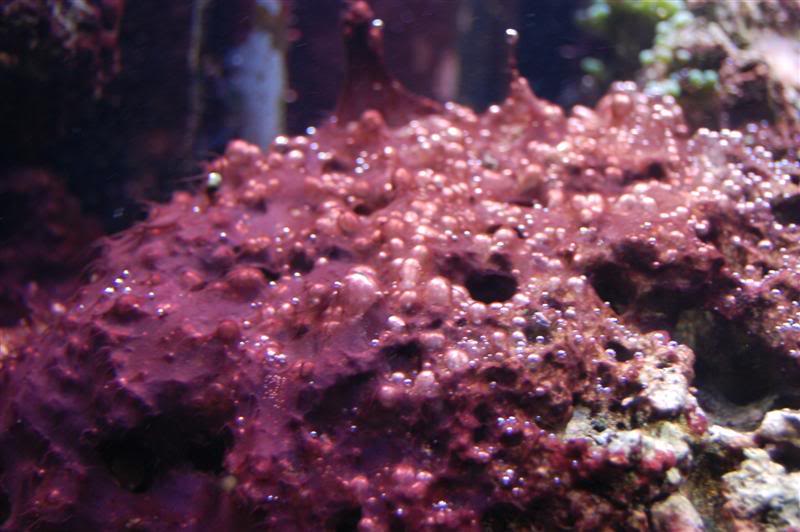Cyanobacteria can quickly become a problem for your aquarium unless you know how to recognize it early and intervene before it gets a foothold in your reef environment. Cyanobacteria (aka cyano, blue-green algae, slime algae and red slime) as the name implies, is a bacteria, not an algae. It is important to understand how cyano blooms occur in the aquarium and how we can rid our tanks of this nuisance. Cyano commonly forms slimy mats on rockwork, substrate, corals and other surfaces in the aquarium. In saltwater aquariums cyano is usually red in appearance but it can also be found in shades of green, purple, dark blue, brown and black.
What does cyanobacteria need in order to survive and thrive? Cyanobacteria will typically occur where phosphate and nitrate levels are elevated. Cyanobacteria are a photosynthetic and nitrogen fixing organisms…….in other words, they thrive on light and nitrates. Causes of Cyanobacteria blooms include; an increase in available nitrogen in the water column; an increase in detritus build-up on substrate; inadequate water flow; or when light bulbs go beyond 9-12 months of use. Additionally, tank lighting with a color spectrum below 10,000K can contribute to cyano outbreaks.
Causes of elevated PO4 and No3. Phosphate is commonly introduced into aquariums by using unfiltered tap water or through an RO filter that hasn’t been maintained properly. Many of the quality RO and RO/DI filters include a built in TDS meter, however, it is helpful to use a test kit to check the phosphate levels from time to time and verify the accuracy of the TDS meter.
Phosphates and Nitrates can also be introduced in the foods that we feed to our fish and corals. For fish feeding techniques see our tip of the day feeding suggestions. As mentioned earlier, Nitrates (No3) play a role in cyano growth. It’s important to do regular water changes to remove as much detritus as possible during the water change, being careful not to stir up the detritus in the water column.
Anything dying or rotting in the aquarium will increase NO3 and PO4 levels in the water column. If you see a coral struggling it’s a good idea to place it in a quarantine tank so it doesn’t foul the main display. A dying coral can also cause a chain reaction and lead to further issues……but that’s a discussion for another time.
In Part 2 of, How to Rid Your Aquarium of Cyanobacteria, we will cover several methods of combating cyanobacteria in the aquarium.






